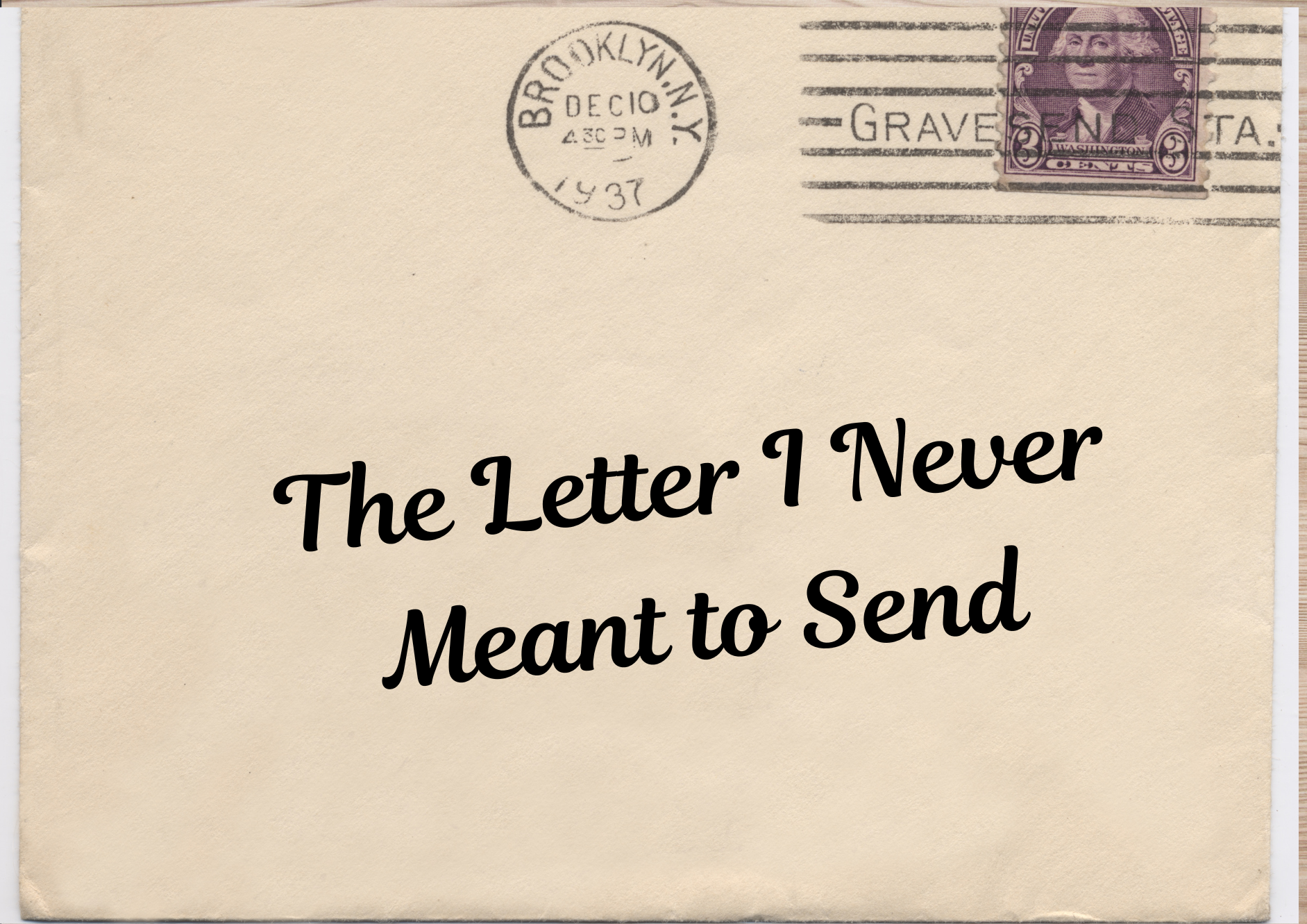A Litany for Living
Because Love Unspoken is Still Unfinished.
I never heard my biological father say I love you. But the truth is—I am pretty sure I never heard him say anything. I have no real memory of him at all. He left before I could even form a sentence, let alone hear one from him.
There’s a strange kind of silence that comes with abandonment. Not just the absence of love, but the absence of a chance at love. I don’t know what his voice sounded like. I don’t know if he ever wondered about me. But I do know what it’s like to grow up without a father’s words, especially those three: I love you.
And then, years later, when my mom died—and not long after, my stepdad too—I wasn’t there to say those words to them, either. Not in person. Not at the end.
They knew, of course. We had love, real and steady. But still—I would have given anything to sit beside them, hold their hand, and say it out loud. Not because they needed to hear it, but because I needed to say it.
That’s why we start here—with this phrase.
I love you.
Three words that are simple. Sacred. And sometimes, spoken too late.
We act like “I love you” belongs to romance movies or greeting cards or perfectly timed dinner dates. But real love doesn’t wait for the perfect scene. It shows up in kitchens and parking lots. In hospice rooms and voicemails.
It shows up trembling and overdue. It shows up clumsy and cracked. But when it’s real, it matters.
In one episode of
THE PITT, a father is dying. His adult children are encouraged to say four things to him before he goes. One of them is “I love you.” It’s not tidy. It doesn’t fix the past. But it lets something sacred come into the room.
Sometimes that’s all love needs: a voice, and enough courage to speak.
We assume people know how we feel. We think our actions speak loud enough. We wait for the right time. But I love you
isn’t just a farewell. It’s a way of being. A kind of spiritual punctuation that should show up regularly, not rarely. Not the performative kind of love. The practiced kind. The daily, quiet, ordinary kind:
I love you, even when the house is loud and no one’s listening.
I love you, even when we’ve been distant.
I love you, even when I forgot to show it yesterday.
Maybe you didn’t grow up in a family that said it. Maybe it still feels awkward or unnecessary. Maybe it’s easier to crack a joke or give a hug than to speak the actual words.
Say them anyway. Even if they come out sideways. Even if they sound clumsy.
Say them before you wish you had.
When I sit with families to learn about a loved one who has passed away, I’m always amazed—and if I’m honest, often saddened—by how rarely I love you gets mentioned. Not because love wasn’t there, but because it went unspoken.
Maybe they just weren’t the “say it out loud” type. Maybe they assumed it was understood.
It’s part of why I make it a point to tell my boys I love them every time we talk. We don’t hang up the phone without saying it - - ever. It’s not dramatic or emotional. It’s just what we do. A habit of the heart. A way of marking the moment and reminding each other: This matters. You matter.
Because I love you is an altar.
And when it shows up late, or soft, or bravely spoken in a place it’s rarely heard.
It becomes an Unlikely Altar.

Every December, the argument returns like a familiar carol sung a little too loud. Is Die Hard a Christmas movie? Some folks hold tight to their cocoa mugs and say, “ No way. ” Others smile the way you smile when the argument is already settled in your heart. I’ve come to believe the debate survives because it isn’t really about explosions or one-liners. It’s about where Christmas actually finds us. When I was preaching, Christmas was rarely quiet. Four or five services on Christmas Eve. Programs to assemble. Bulletins to proof. Candles to count. Microphones to fix. Holy night by way of logistics. I loved the people. I believed the message. But if I’m honest, there were years when I was just muscling through it all, trying to sound joyful while quietly counting the hours until December 26th. Not because I didn’t care. Because I was tired. Christmas had become something I delivered more than something I received. And then, late. After the sanctuaries were dark. After the last “ Merry Christmas ” was said. After the robe was hung back up. Die Hard would sometimes flicker onto the screen. No sermon. No sanctuary. Just a tired preacher on a couch watching a tired man crawl through air ducts, barefoot, scraped up, and refusing to quit. That’s when Christmas found me. First, the setting. Christmas Eve. Office party. Tinsel, teddy bears, and awkward small talk. The soundtrack includes sleigh bells and gunfire, which feels honest if we’re being real about the season. Love arrives on a plane. Redemption arrives barefoot. Second, the plot. A man flies across the country to fix a marriage. He brings a gun, sure, but mostly he brings humility. He learns to say the right name. He learns to ask for help. He learns that reconciliation costs something. If that’s not Advent, I’m not sure what is. Third, the theology of it all. Christmas, at its heart, insists that hope shows up where it shouldn’t. In a stable. In a cubicle farm. In a high-rise named Nakatomi. Grace breaks in during a holiday party and doesn’t bother to RSVP. This is why Die Hard feels like an altar to me. Not a cathedral altar with candles and quiet. An Unlikely Altar . The kind you stumble into while holding snacks. The kind that surprises you with meaning between explosions and one-liners. Because the movie isn’t really about violence. It’s about stubborn love. It’s about a man who keeps crawling through ducts because quitting would be easier, but it would be less faithful. It’s about choosing a relationship over pride. It’s about saying, “ I was wrong, ” and meaning it, even when the building is on fire. And yes, there is a Christmas miracle. Snow falls in Los Angeles. Paper snow, but still. A family is restored. A villain falls. A limo driver gets a tip. The season delivers what it always promises: not perfection, but presence. So, light the tree. Pour something festive. Put Die Hard on the screen and let it preach. Let it remind you that Christmas shows up loud and sideways, that love sometimes limps, and that grace can absolutely wear a tank top. An Unlikely Altar. A Holy night. Yippee-ki-yay, AMEN! 🎄💥

I don’t know your name, but I know this moment. You opened the conversation. You hesitated. And then life stepped in. You know, that happens more often than you might think. I’ve sat at kitchen tables where someone said, “ We meant to do this .” I’ve stood beside families who whispered, “ They kept saying they’d get to it. ” I’ve watched love carry grief—and then watched grief carry bills, decisions, and questions that felt impossibly unfair. This isn’t a letter written to rush you. It’s written because I’ve seen what happens when no one ever circles back. I once stood with a family the morning after a death. The house was quiet in that way only grief can make it. Coffee untouched. Phones buzzing with questions no one wanted to answer yet. Someone finally asked, “ Is there anything in place? ” But there wasn’t What followed wasn’t just sadness. It was scrambling. Credit cards. Awkward conversations. A weight added to a moment already heavy with love and loss. But there are those times when I have seen another scene. I’ve been with families where one small thing was already taken care of. Not everything. Just enough. And in those rooms, grief was still heavy—after all, love always makes it heavy—but it wasn’t tangled up with panic or uncertainty. That’s why this matters to me. Not because I sell final expense insurance. But because I’ve watched what happens when love prepares the way—and when it doesn’t get the chance. If you paused because the conversation felt heavy, I understand. If you paused because life got loud, I understand that, too. If you paused because you told yourself, “ I’ll come back to this ,” I’ve heard that sentence more times than I can count. This isn’t about fear. It’s about care. It’s about peace. It’s about love. Final expense planning isn’t about planning your death. It’s about caring for the people who will still be here when you’re gone. It’s about making sure grief doesn’t have to carry more than it already will. Love will always make grief heavy. A plan simply keeps other burdens from piling on. If you never come back to this conversation, I hope you still hear the heart behind it. And if someday you do return, I hope you know the door was always open. Because this work—this quiet, unseen preparation—is one of the last ways love shows up. And that is no small gift.

The service is over. The thank-you notes have been started. The flowers are starting to fade. Most of the company has travelled home. And the casseroles are stacked in mismatched containers, names written on blue tape. This is what the day after looks like. It’s the morning when the house is too quiet. When the adrenaline wears off. When everyone else has returned to their lives, and you are left standing in the middle of a room, wondering what happens next. Because grief is heavy enough. Not only is the day after quiet, but it is also the kind of silence that invites questions. And those questions can overwhelm you. Who do we call now? What needs to be paid? Is there insurance? Where is the paperwork? What did they want? These questions don’t come because people are being practical. They come because love is trying to keep going in the middle of loss. And because grief is heavy enough, those questions can feel overwhelming. I’ve spent years standing with families in these moments. As a pastor. As a celebrant. As someone who knows that the hardest parts often come after the service ends. I’ve seen families gathered around kitchen tables, coffee gone cold, paperwork spread out in quiet confusion. I’ve also seen something else. I’ve seen what happens when one small thing is already taken care of. Not everything. Just one thing. A simple plan. A clear answer. A quiet assurance that one question does not have to be asked today. Because grief is heavy enough without financial questions layered on top of it. When that piece is in place, something shifts in the room. Shoulders soften. Breathing slows. People are allowed to be exactly what they are in that moment— sad, tired, grieving, human. Final expense planning doesn’t take away grief. Nothing does. But it can take away one weight that doesn’t belong there. Because grief is heavy enough on its own. Planning ahead is not about paperwork or policies. It’s about peace. It’s about leaving behind one less burden for the people you love. It’s about making sure the day after holds space for tears instead of tension. If you’ve ever thought, I should probably take care of this someday, you’re not being morbid. You’re being loving. Because grief is heavy enough. Love will always make it heavy. Planning ahead just keeps other burdens from piling on — so families can grieve without also having to guess. And that is no small gift. If you’d like to talk about what planning ahead could look like for your family—without pressure and at your pace—I’m always here for that conversation. Breathe peace. Marty

